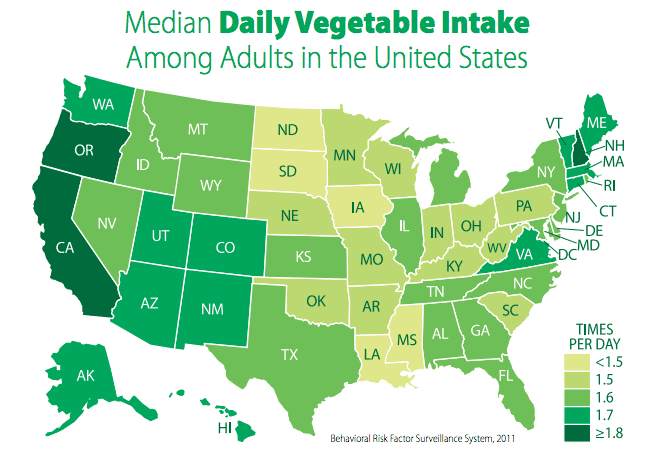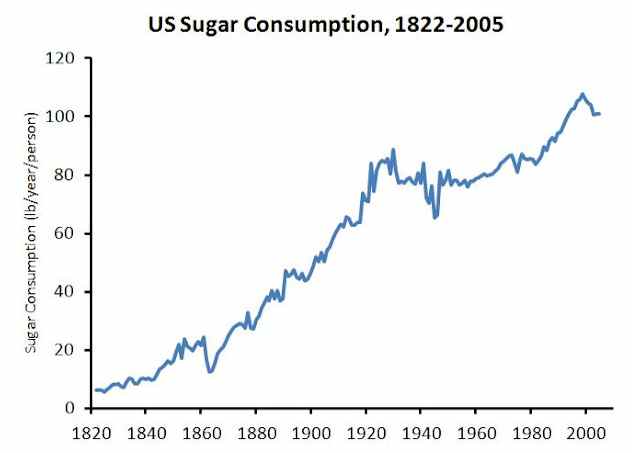This Dr. Axe content is medically reviewed or fact checked to ensure factually accurate information.
With strict editorial sourcing guidelines, we only link to academic research institutions, reputable media sites and, when research is available, medically peer-reviewed studies. Note that the numbers in parentheses (1, 2, etc.) are clickable links to these studies.
The information in our articles is NOT intended to replace a one-on-one relationship with a qualified health care professional and is not intended as medical advice.
This article is based on scientific evidence, written by experts and fact checked by our trained editorial staff. Note that the numbers in parentheses (1, 2, etc.) are clickable links to medically peer-reviewed studies.
Our team includes licensed nutritionists and dietitians, certified health education specialists, as well as certified strength and conditioning specialists, personal trainers and corrective exercise specialists. Our team aims to be not only thorough with its research, but also objective and unbiased.
The information in our articles is NOT intended to replace a one-on-one relationship with a qualified health care professional and is not intended as medical advice.
9 Charts That Show Why America is Fat, Sick & Tired
June 13, 2017

Why America Is Sick
The health of our nation is at risk. While obesity reaches near epidemic proportions, the rate of type 2 diabetes, heart disease and cancer continues to rise. What is the cause?
The way we eat. Sadly, today, many Americans choose convenience over health. Fast-food restaurants and convenience foods continue to make up a significant, and unhealthy, proportion of our American diet.
As these nine charts show, Americans are not getting enough essential nutrients, fiber and natural fats that help our bodies prevent disease.
Chart 1: Calorie Breakdown Madness
According to the USDA, nearly 1,000 calories a day (out of a 2775 daily calorie diet) is attributed to added fats and sweeteners! (1) In comparison, dairy, fruits and vegetables only contribute 424 calories. Our priorities for food are simply out of balance.
[Original Chart: http://www.ers.usda.gov/media/1188540/food-availability_fig04.png]
In fact, 38 percent of adults in the U.S. report consuming fruits less than one time daily, and less than 22 percent report eating vegetables daily. While adolescents do fare better in the vegetable category, this may be attributable to unhealthy fried vegetables (i.e. French fries) and other processed vegetables available at school.
Oregon and California stand ahead of the rest of the country; adults in these states eat vegetables 1.8 or more times per day. Meanwhile, adults in five states report eating vegetables less than 1.5 times per day.
Chart 2: 45 Percent Increase in Grain Consumption
As of 2000, Americans were consuming nearly 200 pounds of grain per year, the vast majority from wheat flour. It’s important to note that while we are consuming considerable more wheat, we must take into account that it isn’t the same wheat we once ate. Today, according to the Journal of Trace Elements in Medicine and Biology, the mineral density of wheat has dramatically declined in the last 20 years.
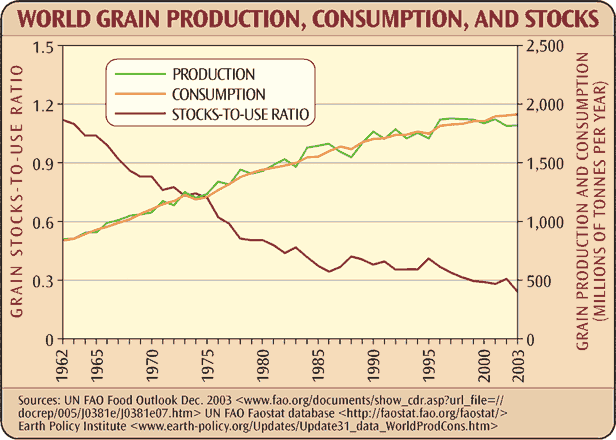
The wheat of today has nearly 30 percent less minerals. Why is the wheat we eat today less nutritious than before? Because of GMOs. Researchers believe that the significant increase in number of individuals with celiac disease and gluten intolerance is a result of nutritionally bankrupt wheat, as well as the dramatic increase in its consumption.
In addition to wheat, our diets high in other grains put us at risk for tooth decay. Phytic acid — naturally found in nuts, seeds, legumes and grain, and added to many commercially available breads and whole grain products — can affect absorption of magnesium, calcium and zinc.
Phytic acid is considered an “anti-nutrient.” Phytic acid can interfere with the absorption of nutrients by binding minerals together in the digestive tract, making them less available for absorption. There is also evidence that suggests that it can inhibit certain enzymes in our digestive system, leading to digestive upset. (Tannenbaum and others. Vitamins and Minerals, in Food Chemistry, 2nd edition. OR Fennema, ed. Marcel Dekker, Inc., New York, 1985, p 445).
In addition, a study found that phytic acid that is added to bread actually inhibits magnesium absorption (2). Today, nearly 80 percent of Americans are magnesium deficient, leading to leg cramps, insomnia, fibromyalgia, high blood pressure and osteoporosis. An additional study found that phytic acid also inhibits the absorption of zinc and calcium resulting in loss of bone density, loose teeth and tooth decay. (3)
Chart 3: American Prescription Medication Use
According to the Centers for Disease Control (CDC), 48.5 percent of Americans have used at least one prescription drug in the past 30 days, and 21.7 percent have used three or more prescription drugs. (4) The most frequently prescribed drugs are analgesics, anti-hyperlipidemic agents, antidepressants and anti-diabetic medications. Most of the conditions that require these most popular prescription medications can be linked to unhealthy lifestyles and a poor diet.
http://www.cdc.gov/nchs/data/databriefs/db42.pdf
Anti-hyperlipidemic agents reduce lipid levels in the blood, lowering cholesterol and triglycerides. They may also promote healthy HDL balances. However, in most cases, you can lower cholesterol naturally, and fast.
Antidepressants include MAOIs, TCAs, SSRIs and other drugs that reduce the symptoms of depressive disorders. However, many of these drugs have frightening side effects, including increased depression, fatigue, anxiety, and a heightened risk for suicide or suicidal thoughts.
Depression is at near epidemic proportions throughout the U.S., in fact, the World Health Organization has identified depression as the No. 1 cause of disability in America. Research has shown that a typical western diet rich in unhealthy fats, refined sugars, processed foods and genetically modified foods may increase the risk of depression. There are natural remedies for depression, including a diet rich in lean protein, wild fish, vegetables, seeds and saturated fats.
Anti-diabetic medications work to lower glucose produced by the liver, stimulate the pancreas to release more insulin, break down GLP-1, encourage the reabsorption of glucose in the kidney, and lower blood glucose levels by literally blocking the breakdown of starches. Finding the right drug to control blood glucose levels can be a challenge for many diabetics, and these drugs are not without side effects. However, there are natural remedies to help stabilize blood glucose levels and actually help reverse diabetes.
Prescription analgesics are used to alleviate pain — included in this designation are narcotic-based painkillers. Many addiction experts, law enforcement and health professionals believe the dramatic increase in narcotic pain medications has led to the near epidemic of heroin addiction. Pain medications, especially narcotics, are addictive.
Today, chronic pain is a real problem throughout the U.S. Individuals battling joint pain, fibromyalgia, arthritis, back pain and more seek powerful prescription medications to help ease the suffering. However, it’s important to mention the link between inflammation, pain and our diets. Our unhealthy diets — full of gluten, aspartame, pasteurized dairy, trans-fats, foods high in omega-6 fatty acids, corn, soy, and processed foods loaded with unhealthy fats, and added sugars — are at the root of many of today’s medical conditions, including pain and inflammation.
Chart 4: Decreases in Fruit and Vegetable Intake
Leafy green vegetables, squash, root vegetables, asparagus, artichokes, and others provide essential nutrients for our bodies. I strongly support juicing vegetables to boost health. Juicing fruits and vegetables helps to make them easier to digest and absorb into your system. Vitamin C, vitamin E, essential B vitamins and a whole host of minerals crucial to good health are easily incorporated into your diet.
http://www.cdc.gov/nutrition/downloads/State-Indicator-Report-Fruits-Vegetables-2013.pdf
Combining vegetables allows you to increase the intake of essential nutrients, helping to aid in digestion, improve energy, lose stubborn weight, strengthen your immune system, and lessen your risks for developing chronic diseases like cancer, heart disease and Type 2 diabetes.
Chart 5: Consumption of Sugar Has Skyrocketed
In the last 65 years, not only has the amount of sugar we eat dramatically increased, the source of the sugar has radically changed. In the 1950s, the majority of the sugar consumed by Americans was from cane and beet sugar.
Stephan Guyenet and Jeremy Landen, http://wholehealthsource.blogspot.com
In 2000, according to the USDA, each individual in the U.S. consumed over 150 pounds of sugar. Over half of that came from corn. Just because high-fructose corn syrup is made from corn, of course, doesn’t mean that it is a healthy sweetener.
Over the last hundred years, our taste buds have changed; today everything needs to be super-sweet, even foods we don’t tend to think as sweet. Traditional wheat-based breads, for example, contain sugar. While sugar is important for fermentation and getting yeast to activate, the next time you reach for a loaf of “honey whole wheat,” check the label; it may surprise you. Each slice has three grams of sugar, sourced from both honey and refined sugar.
My favorite natural sweeteners include raw honey, coconut sugar, dates and stevia leaf. It’s important to use even natural sweeteners, in moderation. The challenge comes when eating processed foods.
Unfortunately, food manufacturers do not have to separate added sugar from naturally occurring sugar in foods. Most foods have some levels of natural sugar, and in balance, they are healthy for you. Food labels only have to disclose the total sugars per serving and don’t break down added sugars from naturally occurring sugars. Added sugars come in many forms, so look for labels that include:
- Cane juice
- Corn sweetener
- Corn syrup
- Dextrose
- Fructose
- High-fructose corn syrup
- Invert sugar
- Maltose
- Lactose
- Sucrose
- White sugar
- Corn syrup solids
- Malt syrup
- Anhydrous dextrose
Today, more than 1 in 3 adults in the United States have “pre-diabetes.” This is when blood sugar levels are higher than normal, but not quite high enough to be considered type 2 diabetes. In addition, today nearly 30 million Americans have diabetes, and 1 in 4 of them don’t even know it.
Complications from diabetes include skin infections, glaucoma, cataracts, neuropathy, foot ulcers and calluses, poor circulation, ketoacidosis, high blood pressure, stroke, heart disease, and more. Some of these complications are serious, and some can be fatal. I encourage a healthy lifestyle and diet to help prevent and treat diabetes.
Chart 6: Increase in Hydrogenated Oils and Decrease in Saturated Fat
In 2000, the latest data available, Americans ate nearly 75 pounds of added fats and oils. This number is estimated to be even higher today. The interesting part of this chart is that while “healthy” fats have decreased, the amount of unhealthy fats has increased. In the 1950s, butter, lard and tallow represented nearly 20 pounds per person while today it accounts for just 14 pounds. This is in contrast to processed shortening and margarine, which is today consumed at a rate of over 32 pounds per year, per adult. (5)
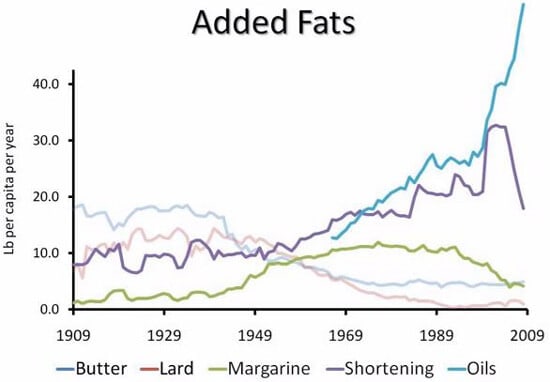
Steve Guyenet (Harvard Law)”The American Diet” 2012 [TED Talk https://www.youtube.com/watch?v=HC20OoIgG_Y]
The truth about saturated fats goes against everything we’ve been told since the mid-1970s. Saturated fats do not cause heart disease or cancer. Yes, you read that right. While elevated triglycerides are linked to an increased risk for developing heart disease, these don’t come directly from dietary fat. They are actually produced in the liver from excess sugar.
In truth, healthy saturated fats hold many benefits for our bodies. They support cell health and bone health, protect the liver from toxins, strengthen the immune system, and are necessary for the absorption of essential fatty acids. My fats of choice include ghee, coconut oil, avocado oil, olive oil and others on my healing foods diet. Unhealthy fats include canola oil, soybean oil, peanut oil, margarine, shortening and lard.
That sharply inclining blue line? That is mostly made up of hydrogenated and partially hydrogenated oils, such as vegetable oils like corn, peanut, soybean and canola. Genetically modified cooking oils, which several of these oils are, have the additional health detriments as other genetically modified foods.
In the chart above, notice how the consumption of lard and butter has decreased, and then remember that we are now facing more heart disease and obesity in this country than ever before. We’ve essentially swapped healthy oils and fats for unhealthy oils and fats, leading to the increase in diabetes and heart disease.
By the way, do you know where canola oil comes from? It’s made from genetically modified rapeseed. Manufacturers knew that rapeseed oil wouldn’t look great on a label, so they changed the name to LEAR (Low Erucic Acid Rapeseed) and then to Canadian Oil, and finally settled on the shortened version: canola oil. Read more about why I believe you should stop using canola oil immediately.
Chart 7: Processed Foods Make Up 63 Percent of Calories
This chart shows that 63 percent of calories Americans are consuming today are coming from processed foods. Convenience foods are packed with preservatives, added oils, sugars and refined grains — none of which is healthy for the body, as these foods definitely do more harm than good.
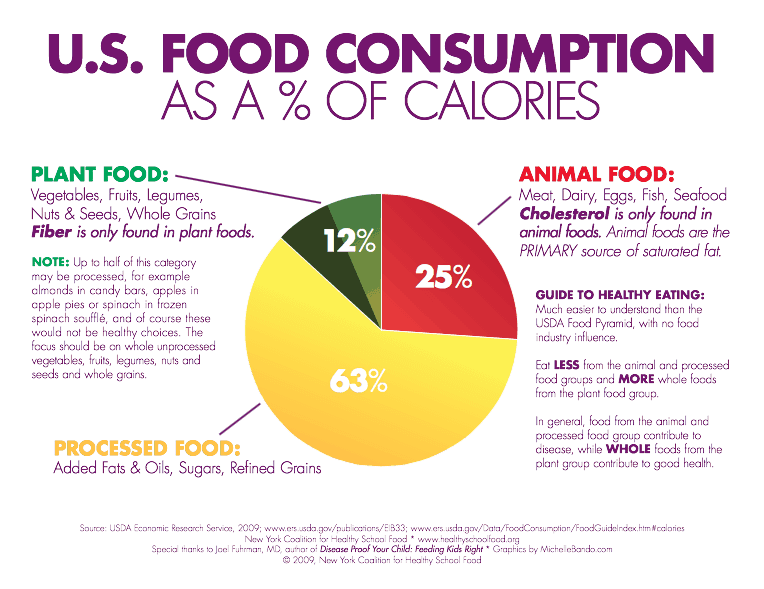
http://www.nyu.edu/sustainability/pdf/NYCHSF_FoodGraph2.pdf
Sadly, plant-based foods are only making up 12 percent of calories consumed in the U.S. today. The statement at the top right of this graph is misleading, but nonetheless shows that even organizations that are trying to get us to eat healthier often miss the overall picture.
I encourage the use of healthy fats, including ghee and coconut oil, because of their overwhelming health benefits. Once considered an unhealthy fat, coconut oil is actually packed with nutrients, and it contains anti-microbial and anti-fungal properties. Read more why I believe you should add coconut oil to your diet in my article the top 5 healthy benefits of coconut oil.
Chart 8: The Prevalence of GMO Foods in Our Diet
Genetically modified foods are literally everywhere in our grocery stores — in raw foods, oils, processed foods and more. Contrary to what Monsanto tells the public, this genetic modification does harm the food quality and nutrition, and puts other crops at risk of contamination. To make matters worse, the Food and Drug Administration does not require that genetically modified foods to be labeled as such. The chart above shows the density of GMOs in common foods.
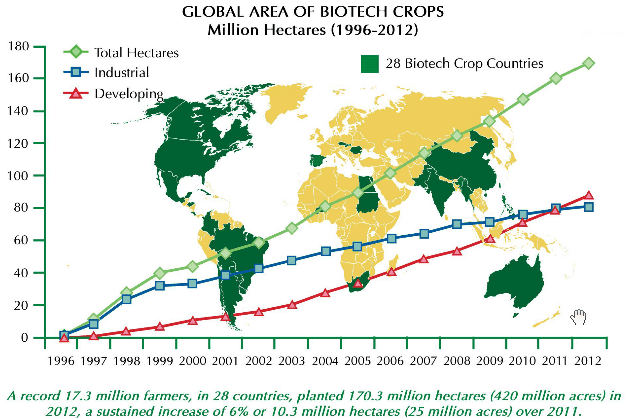
http://www.motherjones.com/blue-marble/2013/02/gmo-farming-crops-more-popular-than-ever-world-charts
Over 60 countries currently regulate, or ban GMOs, and in this regard, the U.S. desperately lags behind. Genetic modification started under the guise to increase yields, make crops more drought- and disease-tolerant, and enhance nutrition. While GMOs may increase yields and create more uniform fruits and vegetables, nutrition values and taste dramatically decreased. In fact, the next time you see an organic “heirloom” tomato in the market, and you dismiss it because it’s shaped funny or not bright red, buy one, and just try it. That is the way a tomato is supposed to taste!
Here are percentages of the most common GMO foods today:
- Corn: 90 percent GMO
- Soy: 94 percent GMO
- Canola: 90 percent GMO
- Hawaiian papaya: 90 percent GMO
- Sugar beets: 95 percent GMO
According to the Institute for Responsible Technology, genetically modified soy and corn may be at the root of gluten intolerance. The question that inevitable comes to mind, since neither soy nor corn have gluten, is how? The answer from IRT’s Jeffrey M. Smith is the components in GMO soy, corn, canola, sugar beets, summer squash, Hawaiian papaya and alfalfa are “linked to five conditions that may either initiate or exacerbate gluten-related disorders.”
Chart 9: Americans Consume 3,400 Milligrams of Sodium per Day
According to this graph from the CDC, Americans over the age of two are averaging over 3,400 milligrams of sodium each day — that is more than double the recommended level and nearly seven times what our bodies actually need. Sodium does help our bodies function, but in reality the vast majority of us need less than 500 milligrams per day.
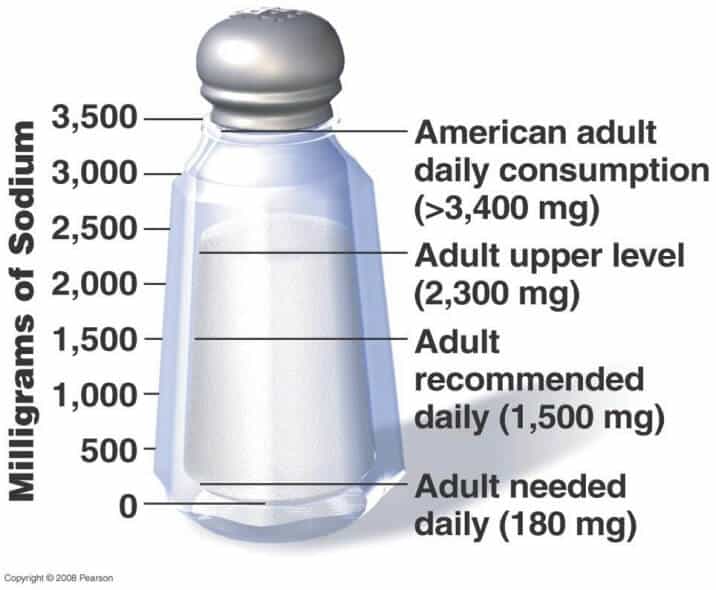
http://www.boston.com/lifestyle/health/blog/nutrition/2012/09/eat_to_beat_high_blood_pressur.html
Just like our taste for sweet foods have increased, so has our taste for salt. While the salt shaker sitting on your table doesn’t help matters, it’s only responsible for approximately 25 percent of our sodium intake. The other 75 percent comes from processed foods and restaurants.
Just one cup of potato chips has over 160 milligrams of sodium. But who eats just one measured cup of potato chips? Meanwhile, the popular canned chicken noodle soup has nearly 900 milligrams of sodium, in just half a cup.
According to the FDA food labeling requirements, to be considered “low sodium” foods must contain 140 milligrams of sodium or less per serving. Be mindful when you choose the “25% less sodium” option, it probably still contains far more sodium than you need.
Too much sodium contributes to high blood pressure, increasing the risk of stroke and heart attacks. Today, heart disease and stroke are the first and third leading causes of death in the U.S. (6) The good news is that when salt intake is reduced, blood pressured begins to decrease, within weeks. (7)
Over 40 Percent of Sodium Intake Comes from These Foods (8)
- Breads and rolls
- Cured meats, cold cuts, deli meats
- Pizza
- Poultry
- Soups
- Sandwiches and burgers
- Cheese
- Pasta dishes
- Meat dishes
- Snack products, including chips, pretzels and popcorn
The healthy alternative is sea salt, or Himalayan salt. Salt makes foods more enjoyable, but table salt is highly processed and all health benefits of salt have been lost. Some natural salts — including Himalayan salt and Celtic sea salt — actually support good health. They help to prevent muscle cramps, regulate water content in the body, regulate blood pressure and alkalize the body.
Type 2 diabetes, cancer, heart disease, obesity, digestive disorders, fatigue, chronic pain and hormonal imbalances plague adults and children alike. Many of these conditions can be prevented, and even reversed with healthy eating and lifestyle changes. Transition to a healthy eating plan doesn’t have to be difficult. My healing foods diet can help to strengthen the immune system, while bringing the body back into balance.





